Introduction
Spain, a country renowned for its vibrant festivals and rich history, boasts a myriad of celebrations that captivate both locals and tourists alike. Among these, the Moros y Cristianos festival stands out, not just for its grandeur but for the profound historical and cultural significance it holds.
Overview of the Moros y Cristianos festival
The Moros y Cristianos festival is a spectacular event celebrated in various parts of Spain. It commemorates the battles, combats, and skirmishes between Moors (or Muslims) and Christians during the period known as the Reconquista (from the 8th to the 15th century). These battles were pivotal in shaping Spain’s identity, and the festival is a vibrant reenactment of this crucial period in Spanish history.
Its significance in the Spanish cultural tapestry
More than just a mere reenactment, the Moros y Cristianos festival is a testament to Spain’s ability to honor its past while celebrating its diverse present. It’s a fusion of cultures, a dance of history, and a display of communal unity. The festival not only pays homage to the battles of yore but also celebrates the peaceful coexistence of different cultures in modern Spain.
For those keen on delving deeper into this tradition, the official website of the Federación Española de Fiestas de Moros y Cristianos (link) offers a wealth of information, from historical backgrounds to schedules of upcoming events.
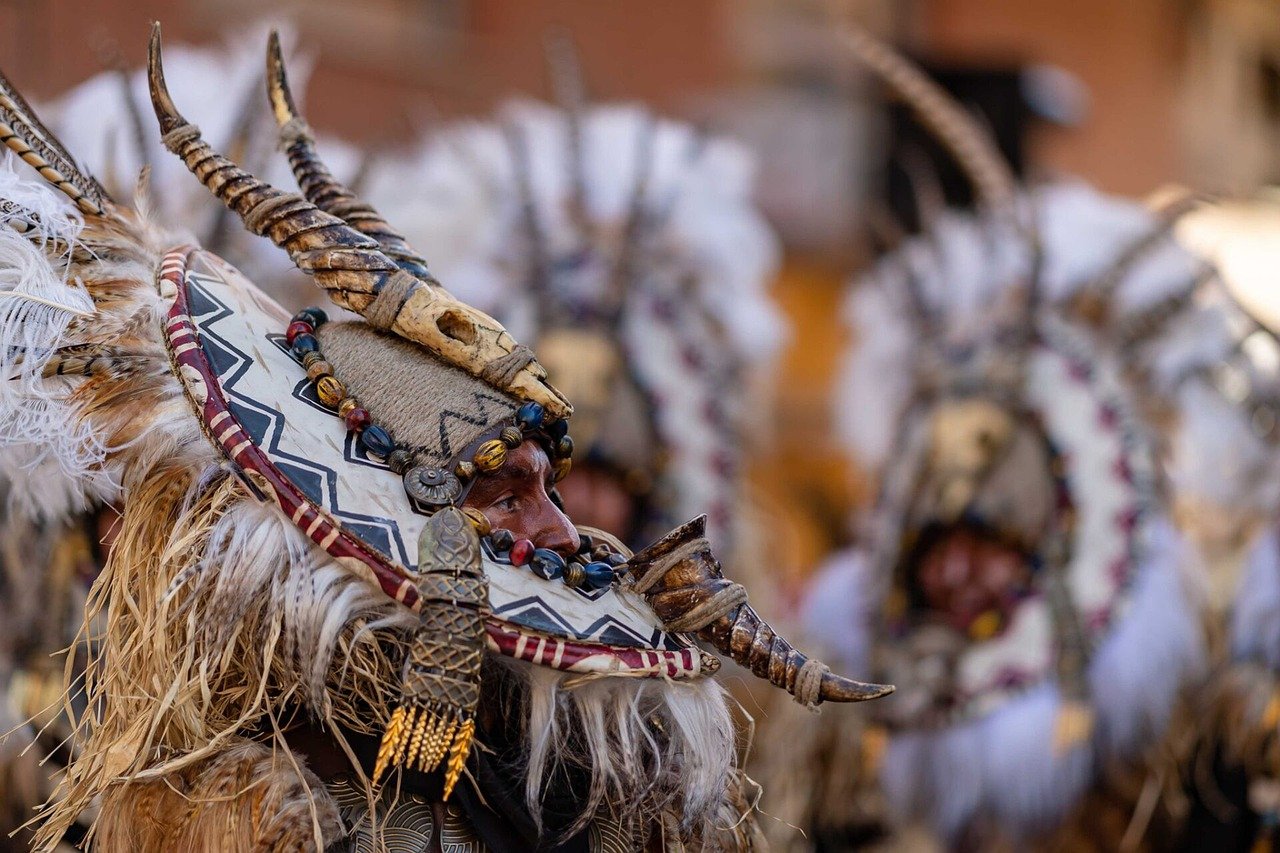
Historical Bbackground
Spain’s rich tapestry of traditions is deeply rooted in its tumultuous history, and the Moors and Christians Festivals are no exception. To truly appreciate the essence of this celebration, one must journey back in time to a period of conquests, kingdoms, and cultural exchanges.
The Moors and the Reconquista: setting the stage
The Iberian Peninsula, modern-day Spain and Portugal, was a melting pot of cultures and religions for centuries. In 711 AD, the Moors, Muslim armies from North Africa, crossed the Strait of Gibraltar and began their conquest of the Visigothic Christian kingdoms of the peninsula. This marked the beginning of an almost 800-year period known as the Reconquista. During this time, Christian kingdoms in the north gradually reclaimed territories from the Moors. This era wasn’t just about battles; it was also a time of immense cultural, scientific, and philosophical exchange, which has left an indelible mark on Spanish culture.
Origins of the festival
The Moros y Cristianos festival traces its origins back to the late Middle Ages, as towns and cities that were reclaimed by the Christians celebrated their newfound freedom with festivities and parades. These celebrations evolved over time, incorporating elements of both Moorish and Christian traditions. By the 16th and 17th centuries, mock battles began to be staged, symbolizing the historical struggles. Today, these reenactments form the heart of the festival, with participants donning elaborate costumes that reflect the armor and attire of the period.
For a deeper dive into the historical intricacies of the Reconquista and the evolution of the festival, the Spanish Cultural Heritage Institute offers a comprehensive collection of resources and archives.
The celebration: a day-by-day guide
The Moors and Christians Festivals are not just a one-day affair. Spanning several days, the celebrations are a whirlwind of color, music, and emotion, encapsulating the spirit of Spain’s rich history and vibrant culture.
Pre-festival preparations and rituals
Before the main events kick off, towns and cities across Spain buzz with anticipation. Streets are adorned with banners and flags, symbolizing both Moorish and Christian factions. Locals spend weeks, sometimes even months, preparing their costumes, ensuring every detail reflects historical accuracy. Music bands rehearse traditional tunes, and artisans work tirelessly crafting weapons and props for the reenactments.
Main events: parades, battles, and reenactments
The heart of the festival lies in its grand parades and theatrical battles. Participants, dressed as either Moors or Christians, march through the streets to the rhythm of drums and trumpets. The parades are a spectacle of opulence, with participants donning intricate armor, flowing robes, and feathered headdresses.
As the festival progresses, the reenactments of historical battles take center stage. These mock battles, filled with choreographed skirmishes, horseback charges, and dramatic confrontations, symbolize the centuries-long struggle between the Moors and Christians.
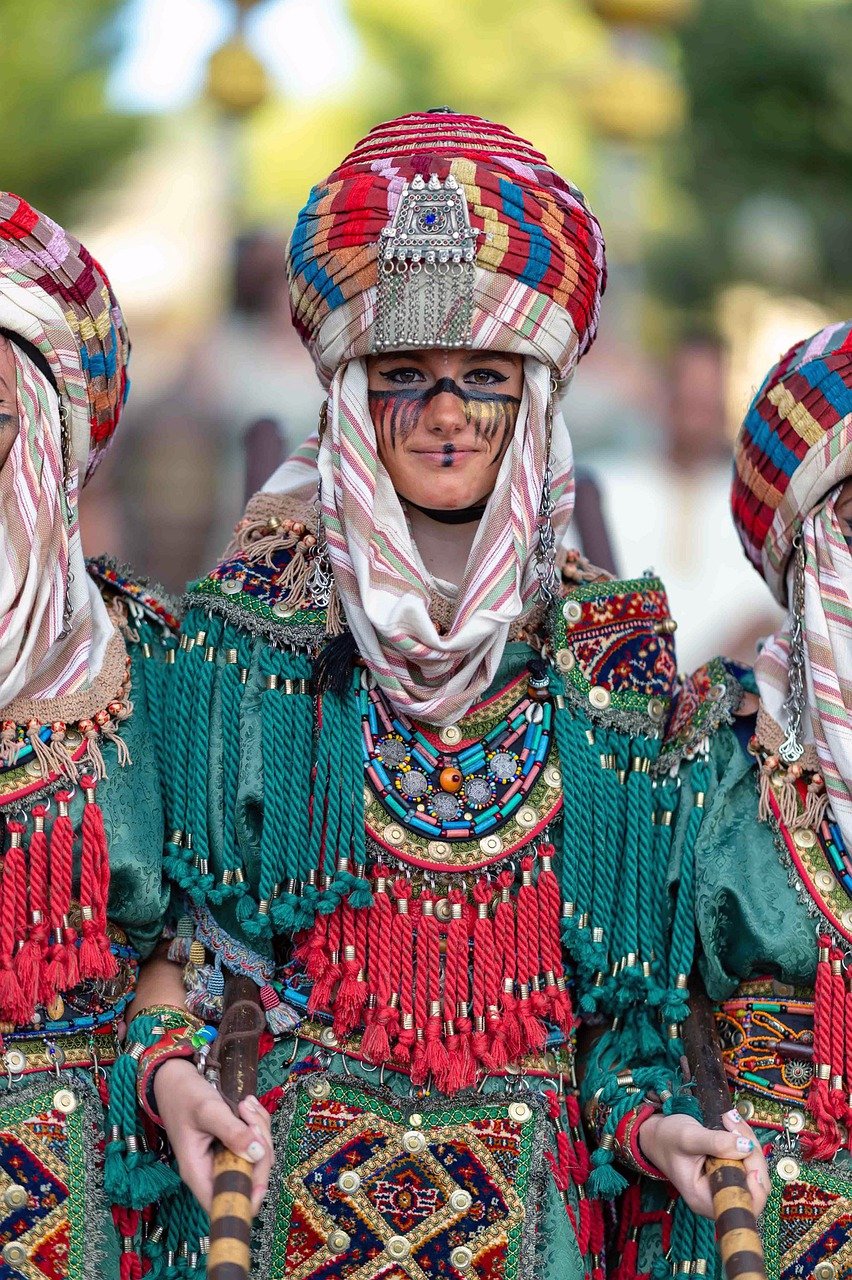
Closing ceremonies and traditions
As the sun sets on the final day, the festival culminates in a series of closing ceremonies. A solemn procession, often lit by torches, winds its way through the town, symbolizing unity and reconciliation. In many regions, a symbolic act of peace between the Moors and Christians is performed, emphasizing the spirit of coexistence. The night ends with a grand fireworks display, lighting up the Spanish sky, a fitting end to a festival that burns so brightly in the hearts of its participants.
For tourists looking to immerse themselves fully in the festival, the Spanish Tourism Board (link) offers detailed guides and schedules for the Moors and Christians Festivals across various towns and cities.
Symbolism and significance
The Moors and Christians Festivals are not merely a display of historical reenactments or a chance for communities to come together. They are a profound reflection of Spain’s intricate past, a tapestry woven with threads of conquest, coexistence, and cultural fusion.
The roles of Moors and Christians: more than just costumes
At the heart of the festival are the two main factions: the Moors and the Christians. Participants take on these roles with a deep sense of responsibility and pride. For many, it’s a chance to step into the shoes of their ancestors, to feel the weight of history and the passion of their forebears.
The Moors, adorned in intricate costumes, often with turbans, scimitars, and crescent moon symbols, represent the Muslim rulers who once held vast territories in Spain. Their presence is a nod to the advanced civilization they established, known for its achievements in science, art, and architecture.
The Christians, on the other hand, don resplendent armor, cross symbols, and regal banners. They embody the Reconquista’s spirit, the Christian effort to reclaim Spain over several centuries. Their role is a testament to the resilience, faith, and determination of the people who shaped modern Spain.
The deeper meaning behind the festivities
Beyond the battles and parades, the festival carries a message of unity and reconciliation. It’s a celebration of Spain’s dual heritage, acknowledging the contributions of both Moors and Christians. The mock battles, though dramatic, always end in harmony, symbolizing the peaceful coexistence that Spain eventually achieved.
Moreover, the festival serves as a reminder that history is not just about victories or defeats. It’s about understanding, respect, and the shared human experience. In a world that often focuses on differences, the Moors and Christians Festivals stand as a beacon of hope, showing that unity can be forged even from the most tumultuous past.
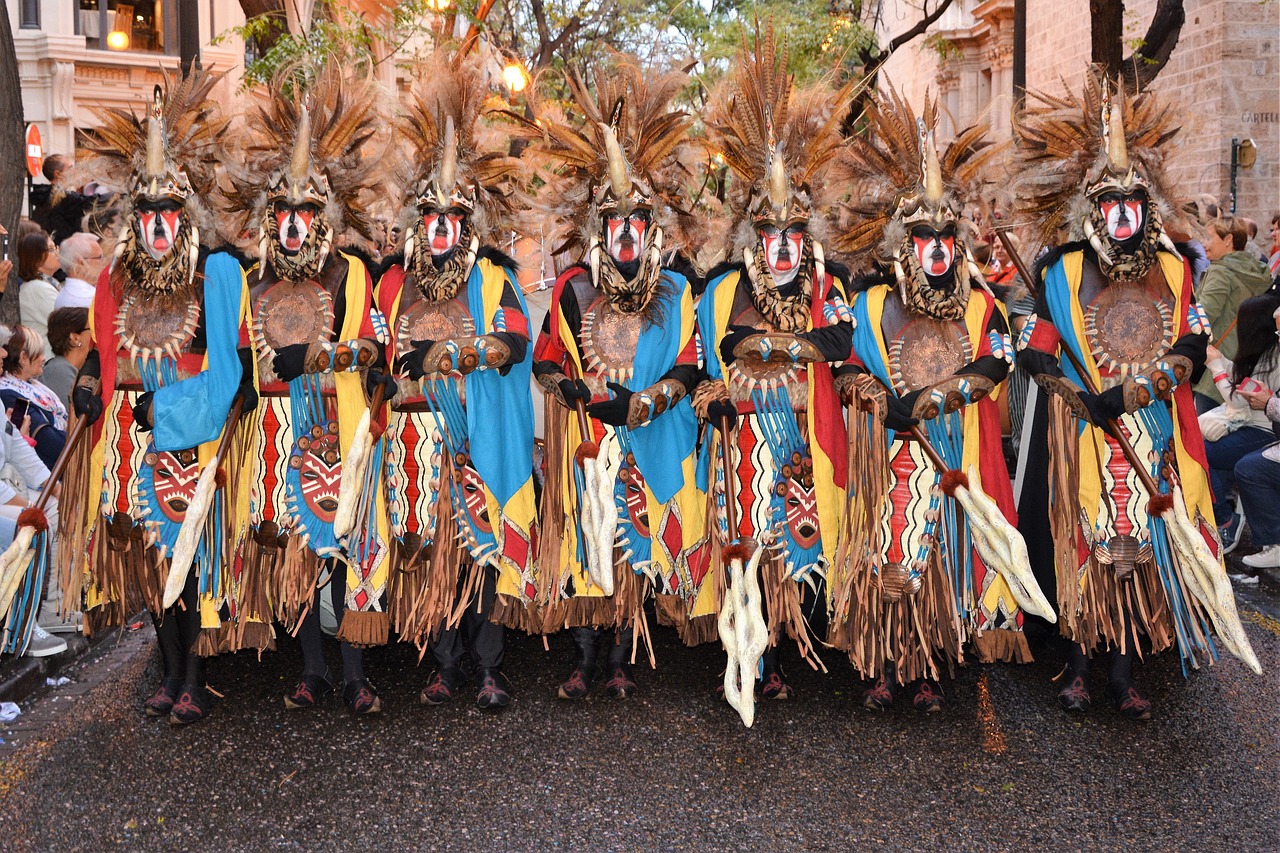
Regional variations
Spain, with its rich tapestry of history and diverse regional cultures, offers a myriad of ways to celebrate the Moors and Christians Festivals. While the core essence of the festival remains consistent, each region adds its unique flavor, making it a fascinating experience for both locals and tourists alike.
How the Festival is celebrated across different spanish towns and cities
From the coastal towns of the Mediterranean to the historic cities of the interior, the Moors and Christians Festivals take on varied forms:
- In Petrel, a town in the province of Alicante, the festival is distinguished by its impressive night-time parades. Illuminated solely by torchlight, participants march through the streets in intricately designed costumes, creating an ethereal atmosphere. The “Alardo” event, a simulated battle using gunpowder, is particularly intense here, echoing through the town’s narrow streets and amplifying the drama of the reenactment.
- The town of Altea, also in Alicante, offers a maritime twist to the festival. The Moors initiate their invasion from the sea, with elaborately decorated boats landing on the beach. This is followed by a fierce beachfront battle, with the Christians eventually driving the Moors back to the sea. The sight of the battle against the backdrop of the Mediterranean is truly a spectacle, drawing numerous visitors each year.
- The town of Bocairent, nestled in the Valencia region, boasts a labyrinthine old quarter, providing a picturesque backdrop for the parades and mock battles.
Unique traditions and highlights from notable regions
- Elda in Alicante is famous for its “Embajadas,” a theatrical representation of the negotiations between Moors and Christians, filled with eloquent speeches and dramatic confrontations.
- Ontinyent has a tradition where the Christian captain, after a fierce battle, manages to capture the Moorish flag, symbolizing the Christian victory.
These regional variations not only highlight the diversity of Spanish culture but also offer tourists a chance to experience the festival in multiple ways. For those keen on planning their visit around the festival, the Spanish Tourism Board provides detailed information on dates, events, and regional specialties.
Top 3 Moros y Cristianos festivals in Spain
Spain is home to countless festivals, but few are as deeply rooted and widely celebrated as the Moros y Cristianos. While the festival is observed in many towns and cities, some celebrations stand out for their grandeur, uniqueness, and historical significance. Here are the top three:
- Alcoy: The most renowned celebration Alcoy, located in the province of Alicante, is often considered the birthplace of the Moros y Cristianos festival. Celebrated in late April, the festival in Alcoy is a grand affair, marked by its elaborate parades, intricate costumes, and the dramatic staging of battles. The “Filaes”, or groups of Moors and Christians, parade through the city with pomp and pageantry, making it a must-visit for anyone looking to experience the festival in its most traditional form. The entire city transforms, with balconies adorned in the festival’s colors and the air filled with the sound of music and gunpowder. (More information can be found on Alcoy’s official tourism website: www.alcoyturismo.com)
- Villajoyosa: A maritime reenactment Villajoyosa, or La Vila Joiosa, offers a unique twist to the festival with its maritime reenactment. The highlight is the dramatic landing of the Moorish troops on the beaches, followed by a fierce battle against the waiting Christians. The vibrant event culminates with a spectacular naval battle. The festival’s backdrop, set against the azure waters of the Mediterranean, adds to its allure. The town’s narrow, colorful houses provide a picturesque setting for the parades and battles. (For event details, visit the Villajoyosa tourism site: www.visitvillajoyosa.com)
- Biar: Tradition and spectacle combined Nestled at the foot of the Sierra de Mariola mountains, Biar offers a Moros y Cristianos festival that beautifully blends tradition with spectacle. The town’s medieval castle provides a fitting backdrop for the reenactments. One of the standout events is the “Embajadas”, a theatrical representation of the negotiations between Moors and Christians. With torch-lit parades, rhythmic drum beats, and the town’s rich history, Biar’s celebration is a mesmerizing experience. (Discover more about Biar’s festivities at their local tourism portal: www.biar.es)
Each of these festivals, with their unique characteristics, offers a glimpse into the rich tapestry of Spanish culture and tradition. They are a testament to Spain’s ability to honor its past while celebrating the present.
Experiencing Moros y Cristianos as a tourist
For travelers seeking an authentic Spanish cultural experience, the Moros y Cristianos festivals offer a unique opportunity to immerse oneself in a tradition that spans centuries. However, to truly appreciate and enjoy the festivities, it’s essential to be prepared. Here’s a guide for tourists eager to partake in this grand celebration:
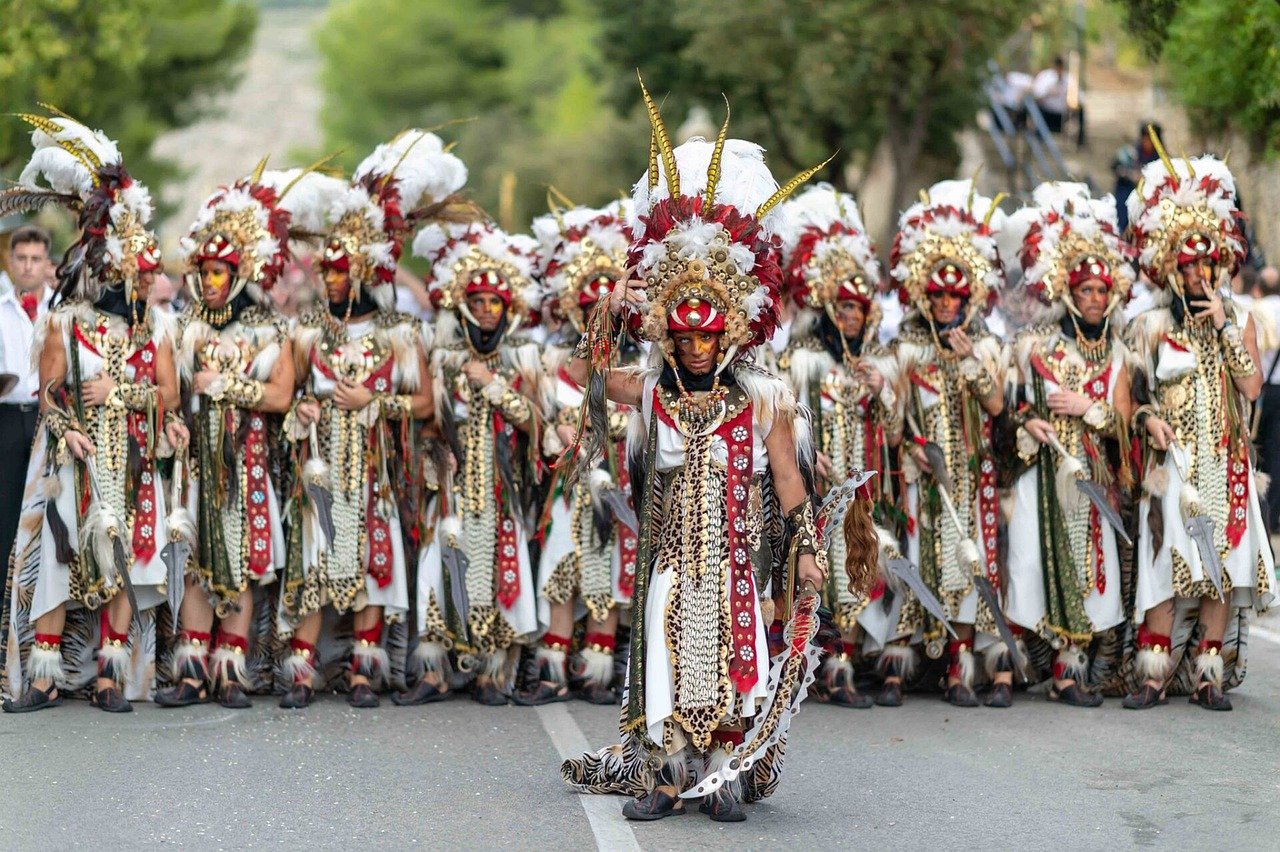
-
Tips for the best viewing spots and participation
- Parade routes: Most towns have designated parade routes, and it’s advisable to secure a spot well in advance, especially in popular locations like Alcoy. Some towns offer seated areas, which can be reserved beforehand. Researching the parade route and key events can help you choose the best vantage points.
- Joining the Filaes: In some towns, tourists can join the “Filaes” or troupes, either as spectators or participants. This is a unique way to experience the festival from within. It’s essential to inquire locally or through tourism offices for such opportunities. (For instance, Alcoy’s tourism website www.alcoyturismo.com often provides details on participation.)
- Night events: Some of the most spectacular events, like the torch-lit parades, happen after sunset. Ensure you’re in the right place at the right time by checking the festival’s schedule.
-
What to wear and how to engage with the local community
- Dress comfortably: Given that the celebrations can last for hours, it’s crucial to wear comfortable shoes and clothing. If you’re participating in any of the events, ensure your attire aligns with the festival’s theme.
- Engage respectfully: While the locals are generally welcoming and appreciate tourists’ interest in their traditions, it’s essential to be respectful. Avoid interrupting processions or ceremonies and always ask for permission before taking close-up photos.
- Local workshops: Some towns offer workshops where tourists can learn about the festival’s history, the significance of the costumes, and even traditional dance steps. Engaging in these activities can enrich your experience and provide a deeper understanding of the festival’s cultural significance.
- Savor the local cuisine: Engaging with the local community also means savoring the region’s culinary delights. Many towns have special dishes or treats that are prepared specifically for the festival. Don’t miss out on these gastronomic experiences.
The Moros y Cristianos festivals are a vibrant blend of history, culture, and community spirit. For tourists, it’s a chance to step back in time and experience Spain’s rich heritage firsthand. With a bit of preparation and an open heart, you’re set for an unforgettable journey into the soul of Spain.
Sustainability and modern interpretations
In an era where sustainability and modern values are at the forefront of global discussions, the challenge lies in preserving age-old traditions like the Moros y Cristianos while ensuring they evolve to reflect contemporary ideals. The festival, deeply rooted in Spain’s history, is not immune to these challenges. Here’s how Spain is striking a balance:
-
Balancing tradition with contemporary values
- Inclusivity: While the festival traditionally revolves around the historical battles between Moors and Christians, many towns are making efforts to ensure the celebrations are inclusive. This means broadening the narrative to emphasize unity, coexistence, and mutual respect, rather than just the historical conflict.
- Educational initiatives: Many local councils and organizations are introducing educational programs to teach younger generations about the historical context of the festival, ensuring it’s understood not just as a spectacle but as a reflection of Spain’s diverse history. For instance, the Alcoy municipality often collaborates with schools to provide educational materials and workshops (www.alcoyturismo.com).
- Environmental considerations: From the costumes to the props, efforts are being made to use sustainable materials. Some towns have even introduced eco-friendly initiatives during the festival, like recycling campaigns or using biodegradable confetti.
-
Efforts to ensure the Festival’s longevity and relevance
- Engaging the youth: Recognizing that the younger generation is the key to the festival’s future, many towns have introduced events specifically targeted at children and teenagers. This ensures they feel a connection to the tradition and are motivated to carry it forward.
- Digital presence: To appeal to a global audience and the tech-savvy generation, many towns and organizations are bolstering their online presence. This includes streaming events live, offering virtual tours, and engaging with audiences on social media platforms.
- Collaboration with Universities: Some towns have partnered with local universities to study the festival’s impact and gather suggestions for its modernization without losing its essence. These academic collaborations provide a fresh perspective and innovative solutions to ensure the festival remains relevant in today’s world.
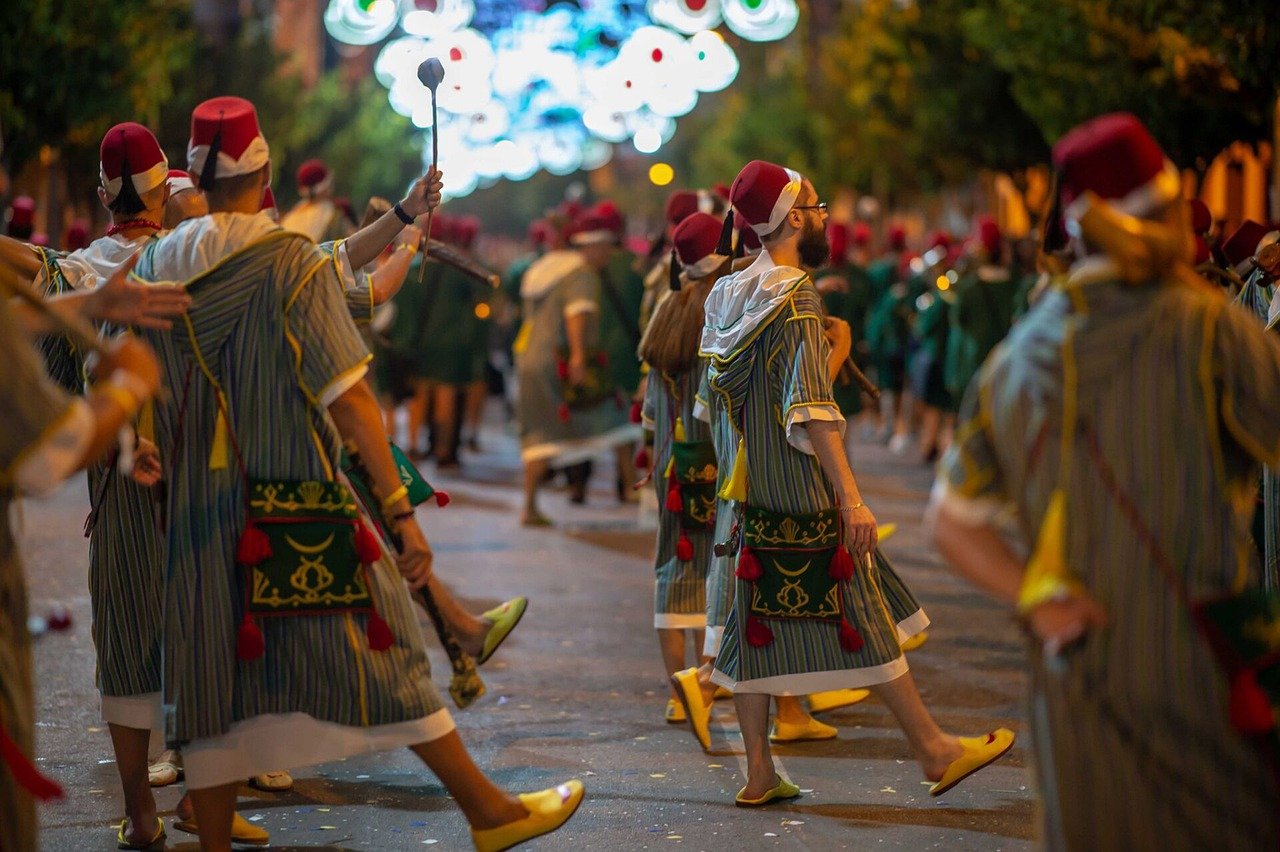
In essence, while the Moros y Cristianos festival is a celebration of Spain’s rich past, it’s also a testament to the country’s ability to evolve and adapt. By intertwining tradition with modern values, Spain ensures that this beloved festival will continue to captivate hearts for generations to come.
Other attractions: beyond the Festival
While the Moros y Cristianos festival is undoubtedly a highlight, the regions where it’s celebrated offer a plethora of other attractions that beckon the curious traveler. Delving deeper into these areas provides a richer understanding of Spain’s multifaceted culture.
Exploring the regions known for Moros y Cristianos
-
- Alcoy: Often referred to as the “City of Bridges” due to its numerous bridges spanning the ravines, Alcoy is a marvel of architecture and natural beauty. The town’s old quarter, with its narrow streets and medieval charm, is a must-visit. The Museu Alcoià de la Festa (MAF) offers insights into the festival’s history and significance (www.museualcoiadelafesta.com).
- Villajoyosa: Beyond its vibrant Moros y Cristianos celebrations, Villajoyosa is renowned for its colorful fishermen’s houses and expansive beaches. The Valor Chocolate Museum provides a sweet detour, tracing the journey of chocolate-making in the region (www.valor.es).
- Biar: Dominated by its impressive castle, Biar is a testament to Spain’s Moorish past. The town’s ancient walls, the Hermitage of Santa Lucía, and the Church of the Assumption are architectural gems waiting to be explored.
Local gastronomy, landmarks, and other festivals to attend
-
-
- Gastronomy: The regions celebrating Moros y Cristianos are culinary hotspots. Indulge in arroces (rice dishes), turrones (nougat), and locally produced wines. Alcoy’s pelotas de fraile (a type of pastry) is a must-try.
- Landmarks: From the Valor Chocolate Museum in Villajoyosa to the ancient walls of Biar, these regions are dotted with historical and cultural landmarks that provide context to the festival’s significance.
- Other festivals: Spain’s festival calendar is bustling year-round. In Alcoy, the Fiestas de San Jorge is another significant celebration. Villajoyosa hosts the Fiesta de Santa Marta, while Biar celebrates the Fiesta de la Virgen de Gracia with much fervor.
-
In essence, while the Moros y Cristianos festival offers a deep dive into Spain’s historical tapestry, the regions themselves are treasure troves of experiences. From gastronomic delights to architectural wonders, there’s much to explore and savor beyond the festival’s confines.
Conclusion
The Moros y Cristianos festival is not just an event; it’s a pulsating heartbeat of Spain’s rich tapestry of traditions. Its enduring appeal lies not just in the grandeur of its parades or the vibrancy of its costumes, but in the stories it tells — stories of conquests, faith, and coexistence. Every drumbeat and every theatrical battle reenactment is a reminder of a time when two distinct cultures clashed, cohabited, and eventually carved out a shared history.
For travelers, the festival offers more than just a spectacle; it’s a journey back in time. It’s an opportunity to walk the streets as the Moors or Christians did, to feel the weight of history, and to understand the intricate dance of cultures that Spain has witnessed over the centuries.
But beyond the battles and the pageantry, the festival is also a testament to Spain’s ability to honor its past while looking ahead. In a world that’s rapidly changing, traditions like these anchor us to our roots, reminding us of who we were and guiding us towards who we might become.
So, to every traveler reading this, here’s an invitation: Come, witness, and partake in this living history. Let the stories of Moros y Cristianos enchant you, and let Spain’s timeless traditions leave an indelible mark on your heart.





